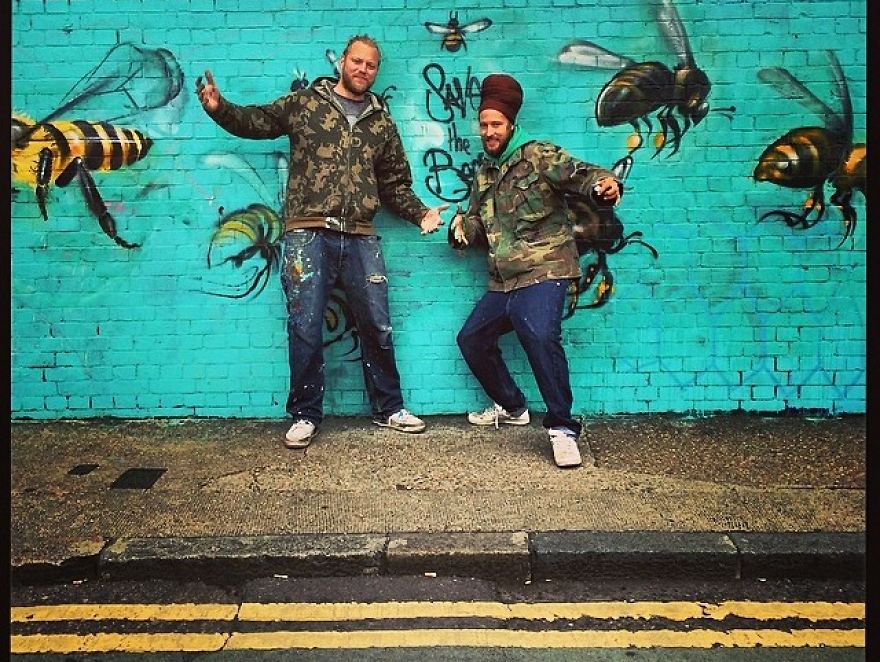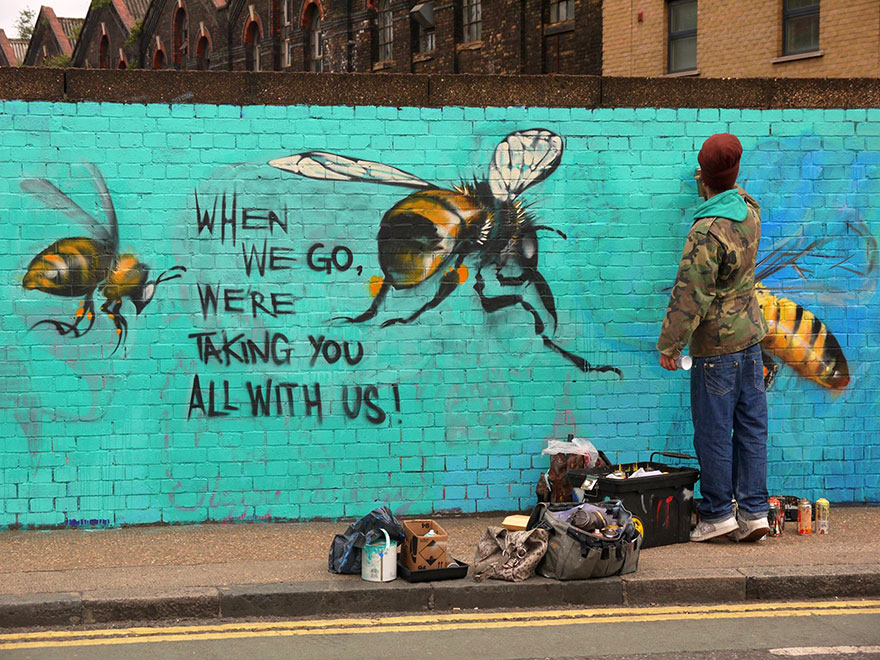Street artists are the best activists of our time, who do not only please the masses with their works, but also call attention to the actual problems. Louis Masai is a creative person, concerned about the ecology of the country and the population of honey bees, without which the humanity will simply cease to exist.
If a person walks down the street and sees that he is approached by a volunteer with leaflets trying to tell about any issue or offer participation in charitable activities, in 80% of cases it will not succeed. People are either concerned with their own problems, or walk down the street with headphones and do not pay any attention to anybody, or they are just in a hurry. But walking along the city streets and passing the brightly colored buildings with the images of bees holding signs, at least 30 seconds of attention are guaranteed.

This unusual way of attracting attention of the masses to the problem is used by the art-activist Louis Masai. In fact, he hates the label «street artist» and considers himself as a public figure who is working for the benefit of the masses.
Masai has recently started to implement the project Save the Bees to tell people who do not have information on what dire consequences this problem will bring for them personally, about the disappearance of honey bees. His methods are simple: bright spray-paintings on the walls of the streets and the main crossroads of the city, as well as the slogans «when we go, we’re taking you all with us!»

By these actions Masai hints at a certain death of humanity after the complete disappearance of honey bees. In fact, this is a very sensitive issue for the United States. According to the national report on the state of the country agriculture, there was a decrease of bee population by 60% between 1947 and 2008. The link between human life and the bees is simple: honeybees are responsible for pollinating approximately 80% of the plants in the world. This means that 70 of 100 cultures that are required for human nutrition are pollinated by bees.
Masai allocates two issues because of which the population of bees continues to decline: varroatosis (bee disease, caused by the mite Varroa destructor) and harmful pesticides. And a Senior Lecturer of the University of Southeast Kenya and a researcher at the International Centre of Insect Physiology and Ecology Elliot Muli defines the third factor in the disappearance of bees — the absence of flowering plants that can provide the necessary product for bee nutrition. And this is a consequence of drought and climate change.

The activist Louis Masai offers three ways for those who might be interested his frescoes and decides to help to increase the population of bees: to put at least in front of your home the flowers that bees will pollinate; buy honey from local beekeepers, to compensate their efforts in collecting and preserving; allow beekeepers access to your garden. And if at least 10% of the population will dare to follow the above, the problem will gradually go down.